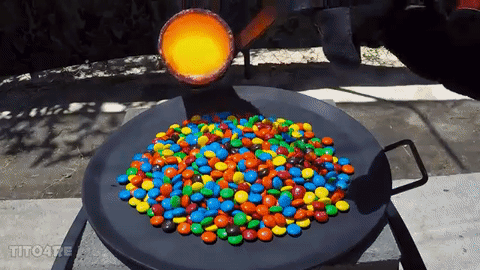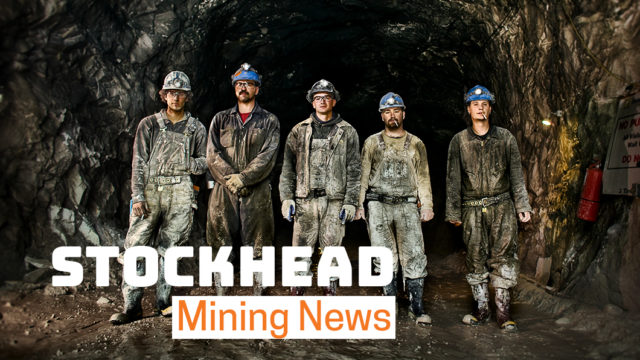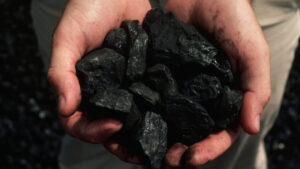When it comes to iron ore, it can take a while to wrap your head around the phrases and terms thrown nonchalantly at times by managing directors and CEOs.
When you’re passionate about something it’s easy to forget that not everyone in the room’s a trained geologist or chemical engineer – some of us are trying to sort the mental magnetite from the hematite, so to speak.
Keep reading if you’re trying to work that one out…
Iron ore is one of those spaces where it’s easy to get lost in the noise. That in itself is amazing, given the significance of the mineral to our economic prosperity.
As a population you’d think we’d all be well versed on our largest source of export revenue. But most of us are not. And that’s why Stockhead, in consultation with Magnetite Mines (ASX:MGT), has prepared this informative glossary relating to a space running about as hot as possible in the peak of the summer season.
Here are some terms you, as a prospective iron ore investor, should know.
For more information, and a full glossary of terms, please check out the full Magnetite Mines handy ready reference guide here.
Acid pellet
Iron ore pellets are small balls of iron ore which are used in the production of steel. Acid pellets, aside from being the coolest-sounding thing on this list, are iron ore pellets with a low ratio of calcium to silicon oxides – low basicity – and are often produced using only the ore and binding materials that hold iron the iron grains together. Clay is commonly used for this.
Banded iron formation
You’ll see this one a lot in exploration reports. This is a distinctive type of rock which is made up of alternating bands of iron oxide layers and iron-poor rock like chert. (Wait. Chert – iron-poor rock). These rocks are often spread across wide areas and can be several hundred metres thick – they also account for a significant proportion of global iron ore production.
Beneficiation
This is a process where the grade of the mined ore is increased by removing high impurities and gangue fractions. This is often done via combination of processes such as classification, gravity, wet or dry magnetic separation or flotation. Processing facilities are usually called something along the lines of ‘concentrators’, ore processing facilities (OPFs), or beneficiation plants.
Blast furnace
Easily the second coolest-sounding thing on the list. A blast furnace is a type of chemical reactor furnace. A solid burden of iron ores, coke from coking coal, limestone and other additives are blasted with hot air and injected into the base of the furnace. The coke acts as both a fuel and chemical reductant. Molten or pig iron and slag which are periodically removed from the furnace base. This has been the main means of steel production for more than 150 years.
CFR
The C and F stand for Cost and Freight. This is a common way of selling iron ore, where a seller arranges and pays for the ocean freight of the product to a destination port. Under this system the risk of loss or damage passes when the products are loaded onto the vessel – despite the seller organising, the buyer is in charge of that side of things and bears all costs from the destination port onwards. Most iron ore sales are now done this way.
Channel iron deposit
These are iron-rich sedimentary stream deposits in paleochannels. They are of much more recent geological origin than banded iron formations, and are another significant commercial iron ore source in Australia – think BHP and Rio’s Yandicoogina deposits and Rio’s Robe operations.
Coking coal
This is used to make coke, a coal product which is necessary for the production of steel in a blast furnace. There are few coals suitable for making the high-quality coke needed for the process – coking coal needs to melt when heated before resolidifying into coke. China and Australia are the major sources of coking coal, which accounts for around 15 per cent of global coal production.
DSO
Direct shipping ore. This is when they put the mined product on the boat without putting it through the beneficiation process. DSO is mined, crushed and screened to a lump and fines product and shipped off. In general DSO is mined from ore deposits with relatively high in-situ grades, and there are few deposits worldwide which produce it. Major examples include the Vale Carajas operations in Brazil and the majority of BHP’s Australian iron ore production.
Intermission
You need a break. Here are some Smarties being melted:

Better? Back to the lesson.
Fines
Iron ore fines are nominally sized between 0 and 6.3mm – they’re called fines because they are literally fine, which may seem odd but meets a number of suitability requirements for ironmaking. Mined ores are crushed and screened to meet these sizing requirements.
FOB
Free on Board. This is the alternate to CFR, where the buyer pays for the ocean freight of the ore. The seller will deliver the goods on board the vessel at a named port of shipment, and the buyer bears all costs from then on.
Grade
The percentage of iron content by weight in a given ore sample. The grade of a shipment of ore is determined by taking a series of representative samples, usually when loading or discharging, carefully drying and subdividing the sample and then analysing it in a lab. Most iron ore sales contracts have conditions which outline the expectations in this regard. Higher percentage iron ore will often attract a price premium, with discounts for lower grade ore against the industry benchmark prices.
Hematite
A common form of iron oxide, which when pure has an iron content of 69.9%.
Lump
Large bits of iron ore – lumps, if you will – which can be screened from mined ore and are suitable for charging direct into blast furnaces. As opposed to fines, lumps are often sized between 6.3 and 31.5mm, and those deemed sufficiently competent at high temperatures for blast furnace purposes earn a variable lump premium. Most the global lump supply comes from Australia, which generates around a quarter of the global output at about 200 million tonnes each year.
Magnetite
A common form of iron oxide which when pure has an iron content of 72.4%. Magnetite is the most magnetic of the minerals in the earth’s crust. While magnetite is stable at room temperature, when heated in air at high temperature, or over geological time, it can oxidise to form hematite – a reaction which reduces its grade. Magnetite can be produced, sold and transported as magnetite, but when pelletised, sintered or charged to a blast furnace the ores actually convert to hematite – meaning magnetite is not actually technically used in ironmaking, and my reference to mentally separating hematite and magnetite in the lead of this story is basically redundant.
Overburden
Waste material which is removed from the top of an economic resource as part of a mining operation. Overburden is removed and cleared to outside of the open pit area, generally with trucks and shovels.
Pig Iron
Nothing to do with the animal. Pig iron is an intermediate product produced during the blast furnace process and removed during the production of steel. This material is very brittle which means it’s not directly used except in a few limited applications. It can be refined to make steel in a basic oxygen furnace.
Silica
A common impurity in iron ore, silica makes up about 60% of the Earth’s crust. It is also referred to as gangue when spoken about in the iron ore impurity context.
Slag
Slag is a byproduct of the ore smelting process to separate the metal fraction from the unwanted fraction. It’s generally made up of a mix of metal oxides and silicon dioxides.
Strip Ratio
The amount of overburden which needs to be handled to extract some volume of iron ore. The strip ratio is generally expressed as tonnes of waste to tonnes of iron ore – a 2:1 strip ratio would mean there’s two tonnes of overburden for every one tonne of ore produced.
Tailings
The fine rejects from the beneficiation of minerals, which is usually pumped as a slurry to above-ground tailings storage facilities where water is recovered. Typically iron ore tailings make up a fine slurry which can readily flow if containment is not managed, as seen by the disasters at Samaro and Brumadinho in Brazil. This is carefully and heavily regulated in the Australian context.
At Stockhead, we tell it like it is. While Magnetite Mines is a Stockhead advertiser, it did not sponsor this article.
You might be interested in












